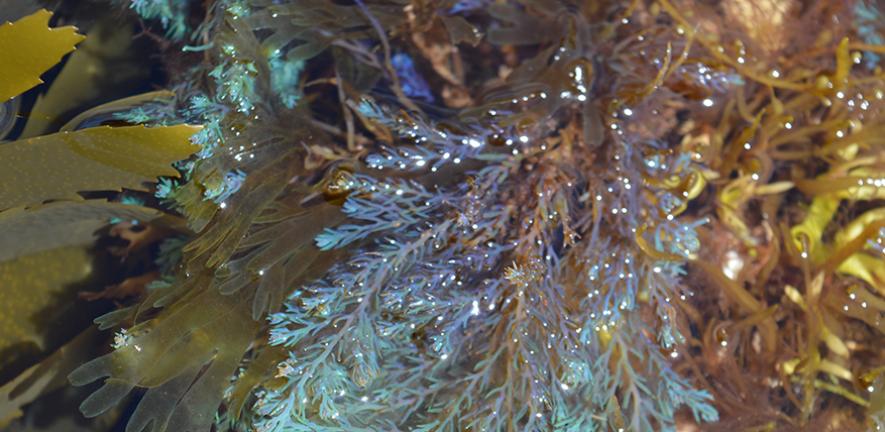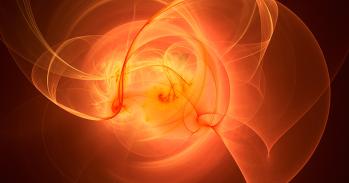
How could tiny antennae attached to tiny algae speed up the transition away from fossil fuels? This is one of the questions being studied by Cambridge researchers as they search for new ways to decarbonise our energy supply, and improve the sustainability of harmful materials such as paints and dyes.
How could tiny antennae attached to tiny algae speed up the transition away from fossil fuels? This is one of the questions being studied by Cambridge researchers as they search for new ways to decarbonise our energy supply, and improve the sustainability of harmful materials such as paints and dyes.
Funded by the European Union’s Horizon 2020 research and innovation programme, the Bio-inspired and Bionic materials for Enhanced Photosynthesis (BEEP) project, led by Professor Silvia Vignolini in the Yusuf Hamied Department of Chemistry, studied how marine organisms interact with light.
The four-year sustainable energy project brought together nine research groups from across Europe and drew its inspiration from nature, in particular from the marine world, where organisms including algae, corals and sea slugs have evolved efficient ways to convert sunlight into energy. Harnessing these properties could aid in the development of new artificial and bionic photosynthetic systems.
Some of the brightest and most colourful materials in nature – such as peacock feathers, butterfly wings and opals – get their colour not from pigments or dyes, but from their internal structure alone. The colours our eyes perceive originate from the interaction between light and nanostructures at the surface of the material, which reflect certain wavelengths of light.
As part of the BEEP project, the team studied structural colour in marine species. Some marine algae species have nanostructures in their cell walls that can transmit certain wavelengths of visible light or change their structures to guide the light inside the cell. Little is known about the function of these structures, however: scientists believe they might protect the organisms from UV light or optimise light harvesting capabilities.
The team studied the optical properties and light harvesting efficiency of a range of corals, sea-slugs, microalgae and seaweeds. By understanding the photonic and structural properties of these species, the scientists hope to design new materials for bio-photoreactors and bionic systems.
“We’re fascinated by the optical effects performed by these organisms,” said Maria Murace, a BEEP PhD candidate at Cambridge, who studies structural colour in seaweeds and marine bacteria. “We want to understand what the materials and the structures at the base of these colours are, which could lead to the development of green and sustainable alternatives to the conventional paints and toxic dyes we use today.”
BEEP also studied diatoms: tiny photosynthetic algae that live in almost every aquatic system on Earth and produce as much as half of the oxygen we breathe. The silica shells of these tiny algae form into stunning structures, but they also possess remarkable light-harvesting properties.
The BEEP team engineered tiny light-harvesting antennae and attached them to diatom shells. “These antennae allowed us to gather the light that would otherwise not be harvested by the organism, which is converted and used for photosynthesis,” said Cesar Vicente Garcia, one of the BEEP PhD students, from the University of Bari in Italy. “The result is promising: diatoms grow more! This research could inspire the design of powerful bio-photoreactors, or even better
The scientists engineered a prototype bio-photoreactor, consisting of a fully bio-compatible hydrogel which sustains the growth of microalgae and structural coloured bacteria. The interaction of these organisms is mutually beneficial, enhancing microalgal growth and increasing the volume of biomass produced, which could have applications in the biofuel production industry.
Alongside research, the network has organised several training and outreach activities, including talks and exhibitions for the public at science festivals in Italy, France and the UK.
“Society relies on science to drive growth and progress,” said Floriana Misceo, the BEEP network manager who coordinated outreach efforts. “It’s so important for scientists to share their research and help support informed discussion and debate because without it, misinformation can thrive, which is why training and outreach was an important part of this project.”
“Coordinating this project has been a great experience. I learned immensely from the other groups in BEEP and the young researchers,” said Vignolini. “The opportunity to host researchers from different disciplines in the lab was instrumental in developing new skills and approaching problems from a different perspective.”
This project has received funding from the European Union’s Horizon 2020 research and innovation programme under a Marie Skłodowska-Curie grant.

The text in this work is licensed under a Creative Commons Attribution-NonCommercial-ShareAlike 4.0 International License. Images, including our videos, are Copyright ©University of Cambridge and licensors/contributors as identified. All rights reserved. We make our image and video content available in a number of ways – on our main website under its Terms and conditions, and on a range of channels including social media that permit your use and sharing of our content under their respective Terms.




